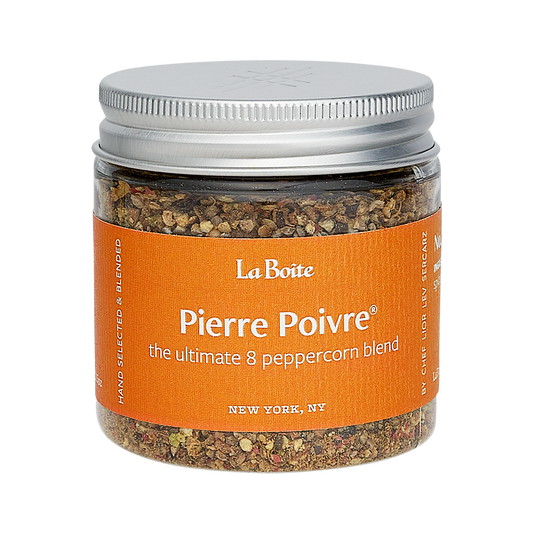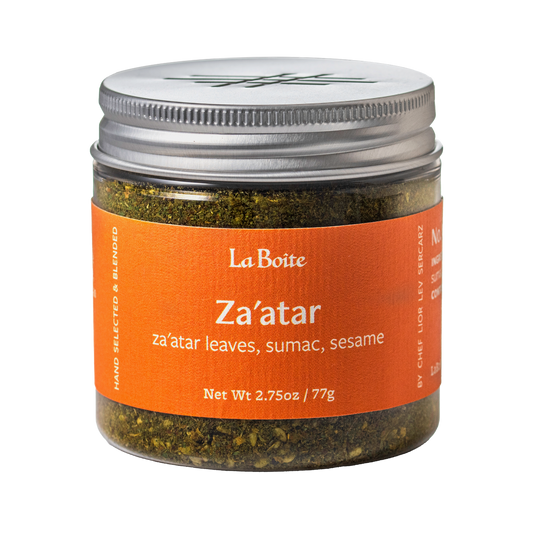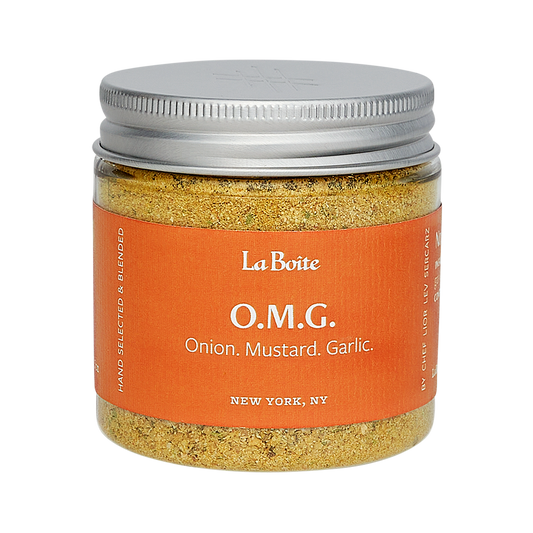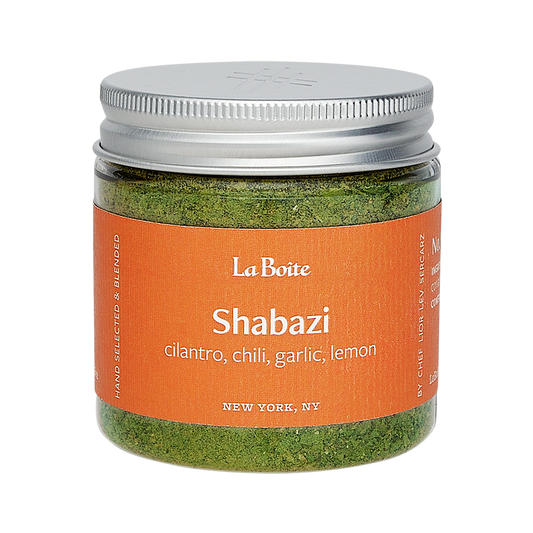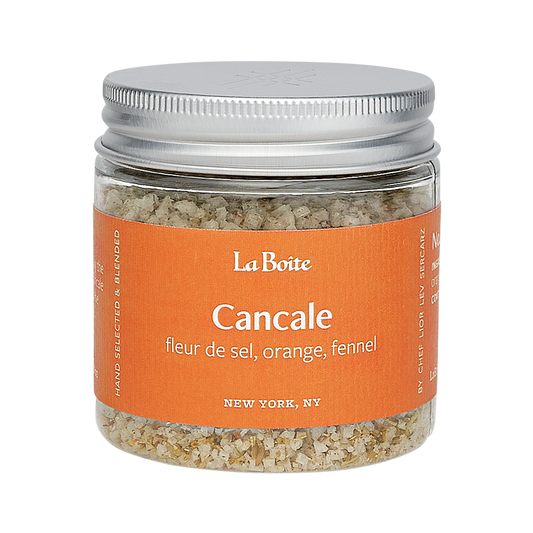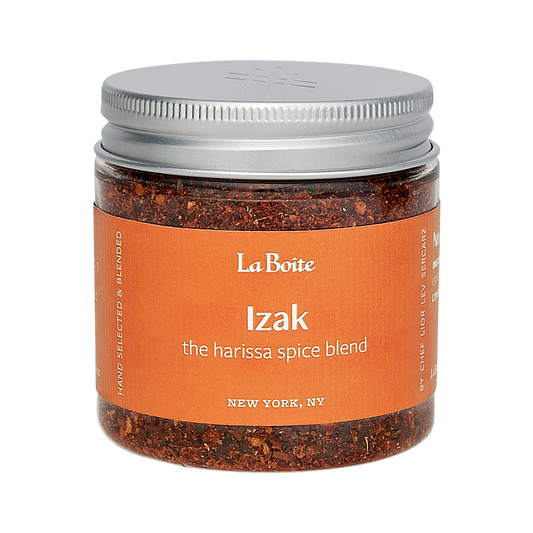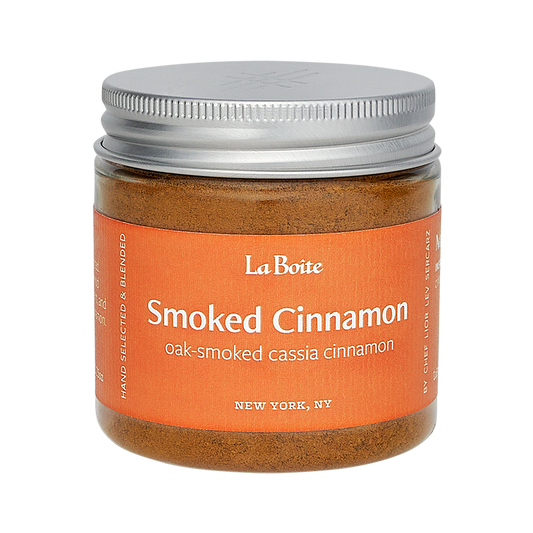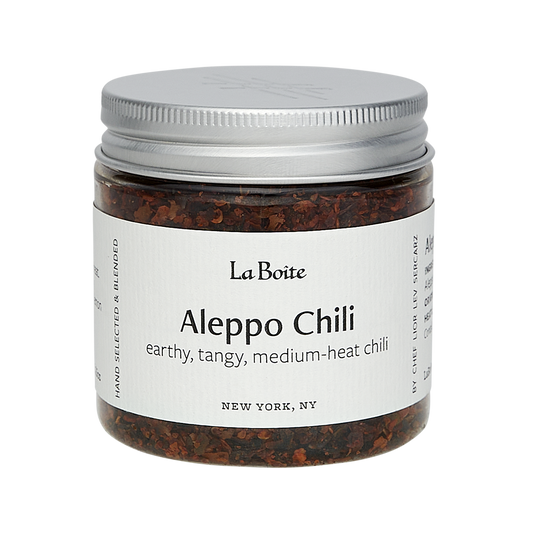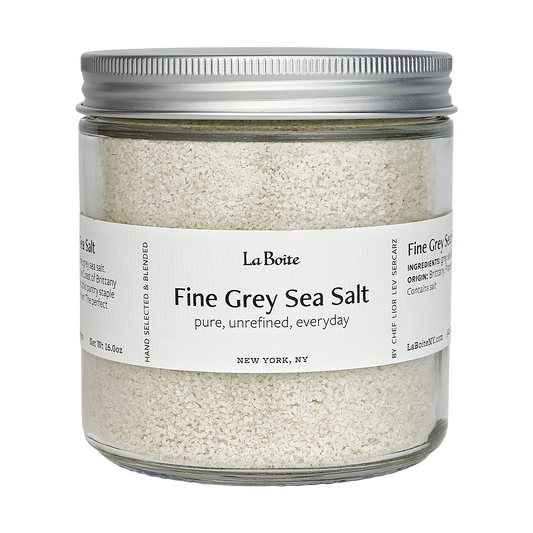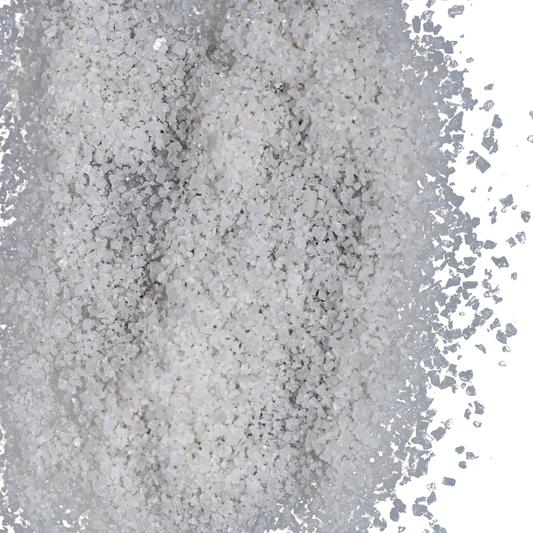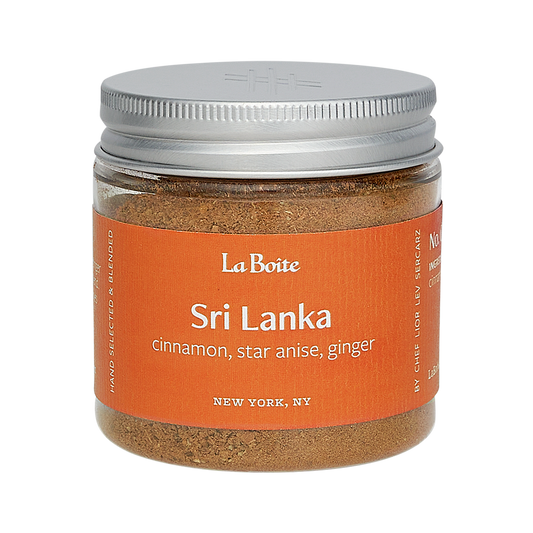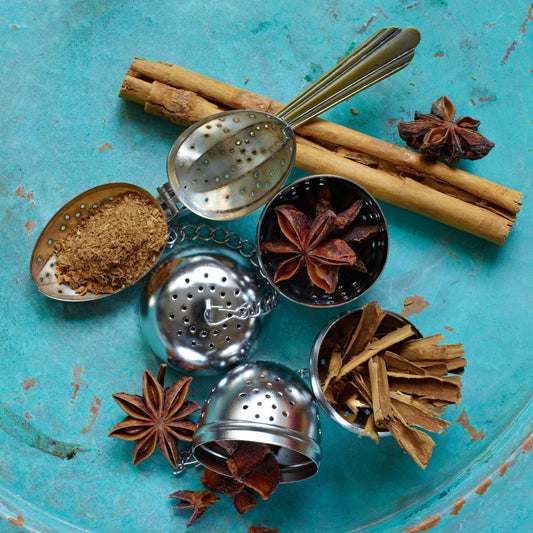Red wine poached pears seasoned with Sri Lanka are elegantly satisfying. Served with ice cream, as part of a cheese plate with blue cheese, or as a side dish for your Passover or Thanksgiving table, they are very versatile for both sweet and savory dishes. The directions below are for whole pears but as a side dish I also like to cut the pears into quarters, remove the seeds, and then poach them to make a platter of glazed red wine pears (possibly spiked with a little Pierre Poivre.
Red Wine Poached Pears
Category
Sweet
Author
Helen Park
Servings/Yield
4
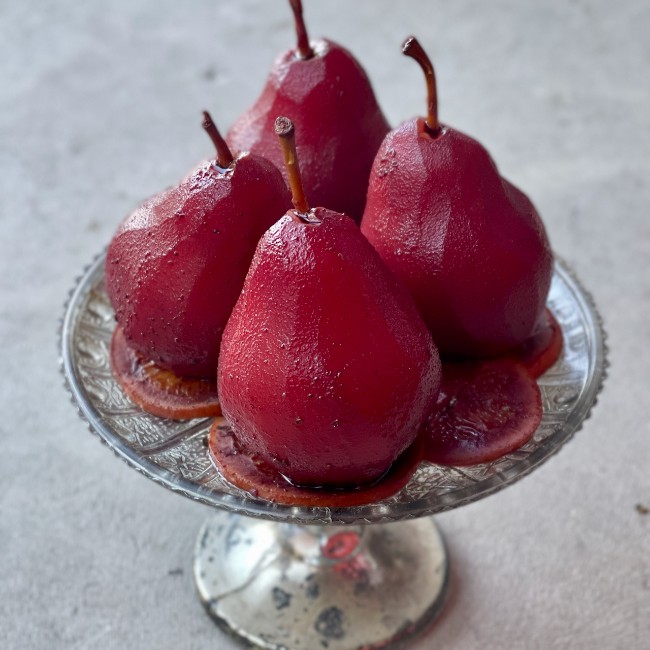
Ingredients
-
3 cups red wine
-
4 pears (Bartlett or similar pear, on the firm side)
-
2 tsp Sri Lanka blend
-
1 Tbsp honey
-
1 navel orange (half thinly sliced, half juiced)
-
Pinch of fine sea salt
Directions
Peel the pears in nice even strokes (the peeling marks show in the presentation) and place them on their sides in a 2 qt saucepan. You want to use a pan that is just the right size so the pears are fully submerged with a minimum amount of added liquid.
Add the red wine, Sri Lanka, honey, orange juice, pinch of salt, and about ¼ cup of water to cover the pears.
Place the orange slices onto the pears to help keep them submerged.
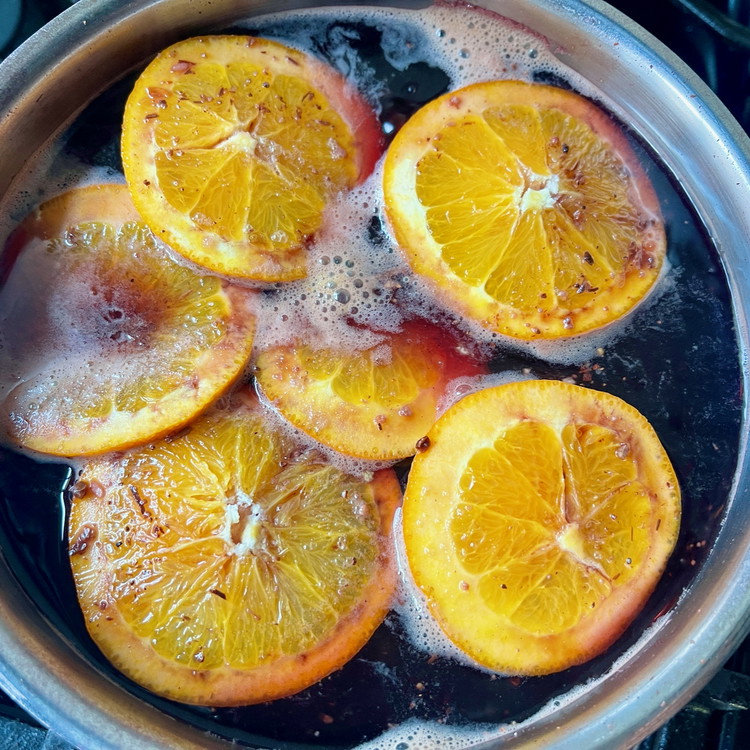
Bring the pot to boil and reduce to simmer gently for 1 hour or until tender. About halfway through, turn the pears over in their liquid to help them poach evenly.
When ready, remove the orange slices and pears to a serving platter.
Continue reducing the poaching liquid until you have ¾ cup liquid remaining. Strain the liquid to remove any spice pieces and serve pears warm with the spiced sauce glazing each beautiful pear.
Recipe Note
Recipe Notes
To get maximum flavor, let the pears marinate overnight after poaching. They can be enjoyed warm or cold and the flavor gets better the longer they have in their poaching liquid.
Variations and Ideas
In place of red wine, white would work great in this recipe too, along with the Sri Lanka. Adjust the quantity of honey as needed depending on whether you are starting with a sweet reisling or a dry sauvignon blanc. Lilet Blanc could be a great alternative as well for its floral notes.
Questions? Contact helen@laboiteny.com
